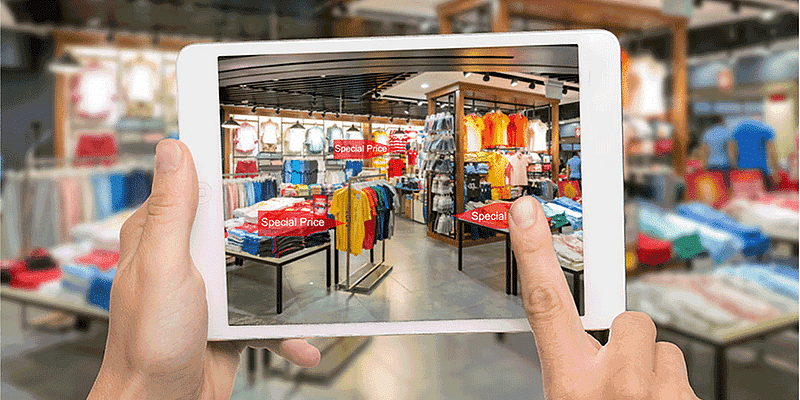The COVID-19 pandemic has accelerated the development and application of digital technologies in ecommerce. The pandemic-induced lockdowns and public restrictions led to changes in consumption patterns with more people taking to online shopping to meet their daily requirements.
As the world returns to normalcy, the question on most retailers’ minds is: how will online sales fare as people settle into the new normal?
According to BOXpoll by Pitney Bowes, while some ecommerce attitudes have returned to pre-COVID-19 thinking, the pandemic-era appreciation for convenience and laissez-faire approach to speed has stuck around as the top reason consumers shop online. The future of ecommerce lies in the ability to provide consumers with an immersive online experience akin to what they experience in stores, but without the challenges.
Here’s a look at some of the key trends in the evolving ecommerce digital landscape:
The intersection of offline and online
The arrival of augmented reality and virtual reality in ecommerce has revolutionised the product visualisation experience. Consumers are not only able to visualise the product in different environments, but also virtually experience it before making the purchase.
Leading home furniture brand IKEA illustrates the implementation of these technologies in an online marketplace. The company created an application that enables customers to use AR via smartphones to strategically place and visualise furniture within their home environments. These technologies bridge the gaps between expectations and reality and could prove vital in shaping customer experience in the future.
Enriching consumer experience
AI, chatbots, and voice assistants are just a few of the cutting-edge technologies that organisations are incorporating into their operations to provide seamless customer experience and save costs.
As per findings from BOXPoll, younger consumers prefer chatbots, with Gen Z and millennials reporting using chatbots frequently. Older consumers (Gen X and Boomers) are significantly less likely to use chatbots as frequently.
Through instant communication and round-the-clock support, digitisation of services is delivering exceptional and superior customer service. Leading personal care and beauty brand Sephora leverages AI bots to facilitate speedy reservations for customers, and also has a shade-matching application that allows buyers to try out different lipstick hues by uploading their pictures to see the look.
Trends like quick commerce allow for under an hour delivery time for small parcels, further enhancing the customer experience and meeting their desire for instant gratification.
Metaverse: Opportunity for underdogs
The metaverse has the potential to provide the closest in-store experience to a consumer online. For example, providing a consumer with simulations that allow them to try on different items of clothing in varied virtual environments and interact with other consumers is as close as one can get to the experience of in-store shopping without the hassle.
There are deep ecommerce applications with the potential for multi-modal interactions between the real and the virtual world.
Consumers will be able to see product displays, walk through the aisles and better visualise the products from all angles from the comfort of their homes. Not just large retailers but startups, and small and medium businesses, have an opportunity to build platforms that showcase their products with the click of a button.
By improving purchasing processes and judgments, the metaverse will significantly impact consumers’ lives in terms of efficiency, speed, and, most importantly, innovation. The future of the metaverse looks promising as it brings endless possibilities to improve the experience of end-users and it is going to revolutionalise the operating model, sales, and profitability for ecommerce businesses. Developments in risk management, new compliance and governance models, and other technological advancements will be playing a key role in the expansion of metaverse.
Conclusion
While digitisation has resulted in a boom in ecommerce growth, it has also brought several challenges. Logistics and returns management remain one the biggest challenges with late deliveries, poor parcel tracking and delayed returns proving to be major turn-offs for consumers. Companies can streamline their shipping by choosing relevant shipping models and strategically planning for returns and exchanges to avoid a compromised shopping experience.
Data breaches and cyber security are also major threats which can lead to loss of customer trust. Brands can utilise various security protocols such as customer data encryption, multi-factor authentication, compliance features, and real-time threat alerts to mitigate cyber threats and maintain brand reputation.
As the ecommerce landscape matures, it will be interesting to see how businesses refine their technology platforms to reach consumers where they are with what they need. Customising experiences for different consumer segments, like Gen X, Gen Z, or millennials, based on the way they interact with brands, would be important to deliver the distinct value that each segment is looking for.
(Disclaimer: The views and opinions expressed in this article are those of the author and do not necessarily reflect the views of YourStory.)


![Read more about the article [Funding alert] Rural social network startup Krishify closes $6.2M in pre-Series A round](https://blog.digitalsevaa.com/wp-content/uploads/2022/02/MeetImage51-1624289890996-300x150.jpg)







![Read more about the article [Jobs Roundup] These openings may help you land a role at logistics unicorn Delhivery](https://blog.digitalsevaa.com/wp-content/uploads/2021/06/logistics-coronavirus-1594115397917-1622615860477-300x150.png)